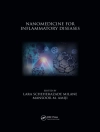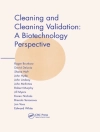Quality of care is a priority for U.S. Agency for International Development (USAID). The agency’s missions abroad and their host country partners work in quality improvement, but a lack of evidence about the best ways to facilitate such improvements has constrained their informed selection of interventions. Six different methods – accreditation, COPE, improvement collaborative, standards-based management and recognitions (SBM-R), supervision, and clinical in-service training – currently make up the majority of this investment for USAID missions. As their already substantial investment in quality grows, there is demand for more scientific evidence on how to reliably improve quality of care in poor countries. USAID missions, and many other organizations spending on quality improvement, would welcome more information about how different strategies work to improve quality, when and where certain tools are most effective, and the best ways to measure success and shortcomings.To gain a better understanding of the evidence supporting different quality improvement tools and clarity on how they would help advance the global quality improvement agenda, the Institute of Medicine convened a 2-day workshop in January 2015. The workshop’s goal was to illuminate these different methods, discussing their pros and cons. This workshop summary is a description of the presentations and discussions.
Board on Global Health & Institute of Medicine
Improving Quality of Care in Low- and Middle-Income Countries [EPUB ebook]
Workshop Summary
Improving Quality of Care in Low- and Middle-Income Countries [EPUB ebook]
Workshop Summary
Kup ten ebook, a 1 kolejny otrzymasz GRATIS!
Język Angielski ● Format EPUB ● Strony 126 ● ISBN 9780309373456 ● Redaktor Gillian J. Buckley & Rachel E. Pittluck ● Wydawca National Academies Press ● Opublikowany 2015 ● Do pobrania 3 czasy ● Waluta EUR ● ID 7149926 ● Ochrona przed kopiowaniem Adobe DRM
Wymaga czytnika ebooków obsługującego DRM












